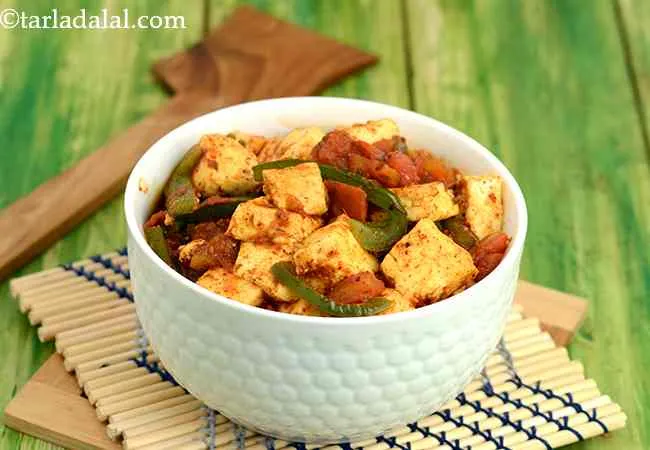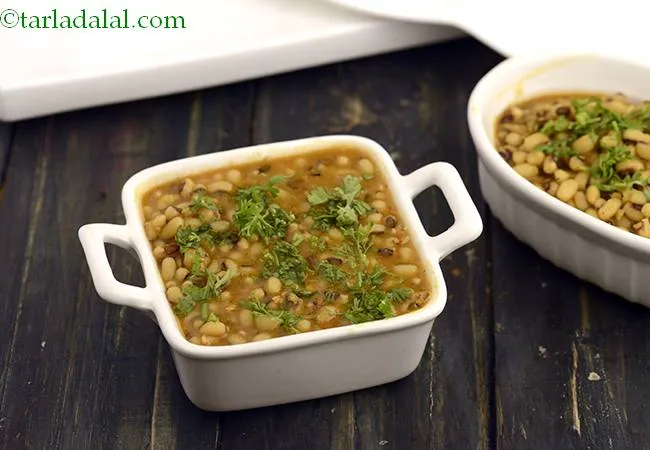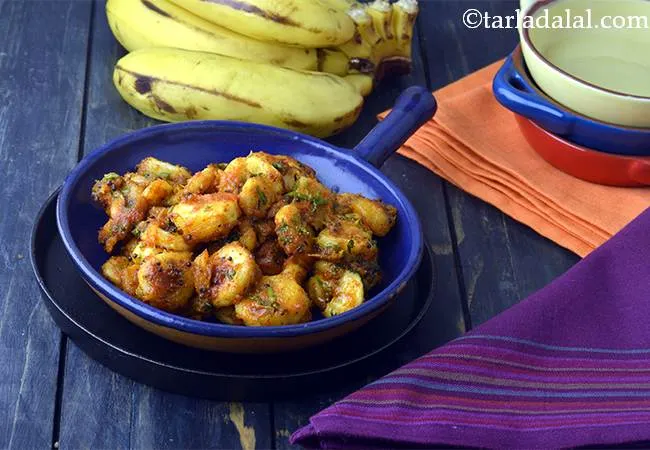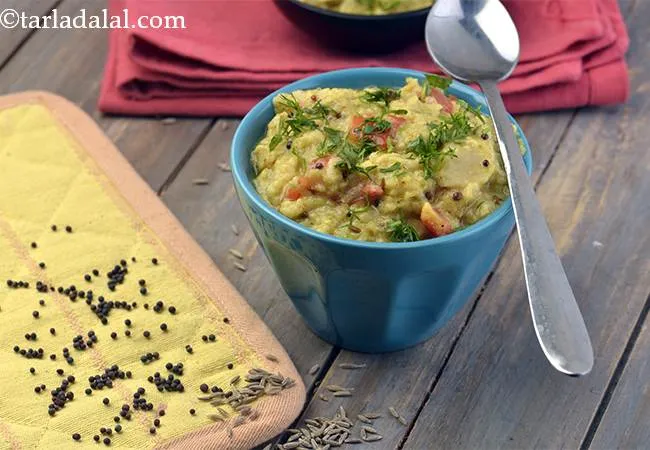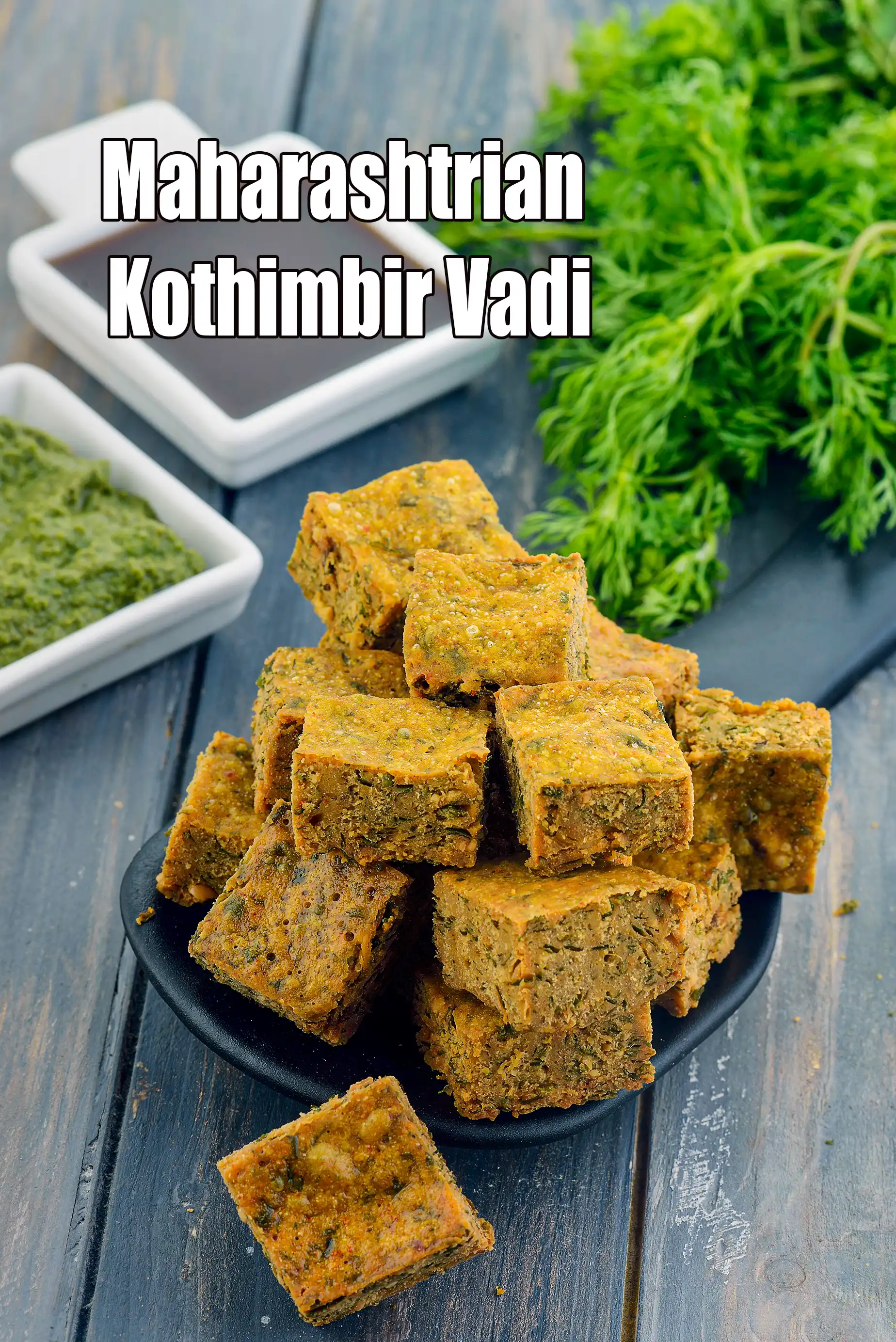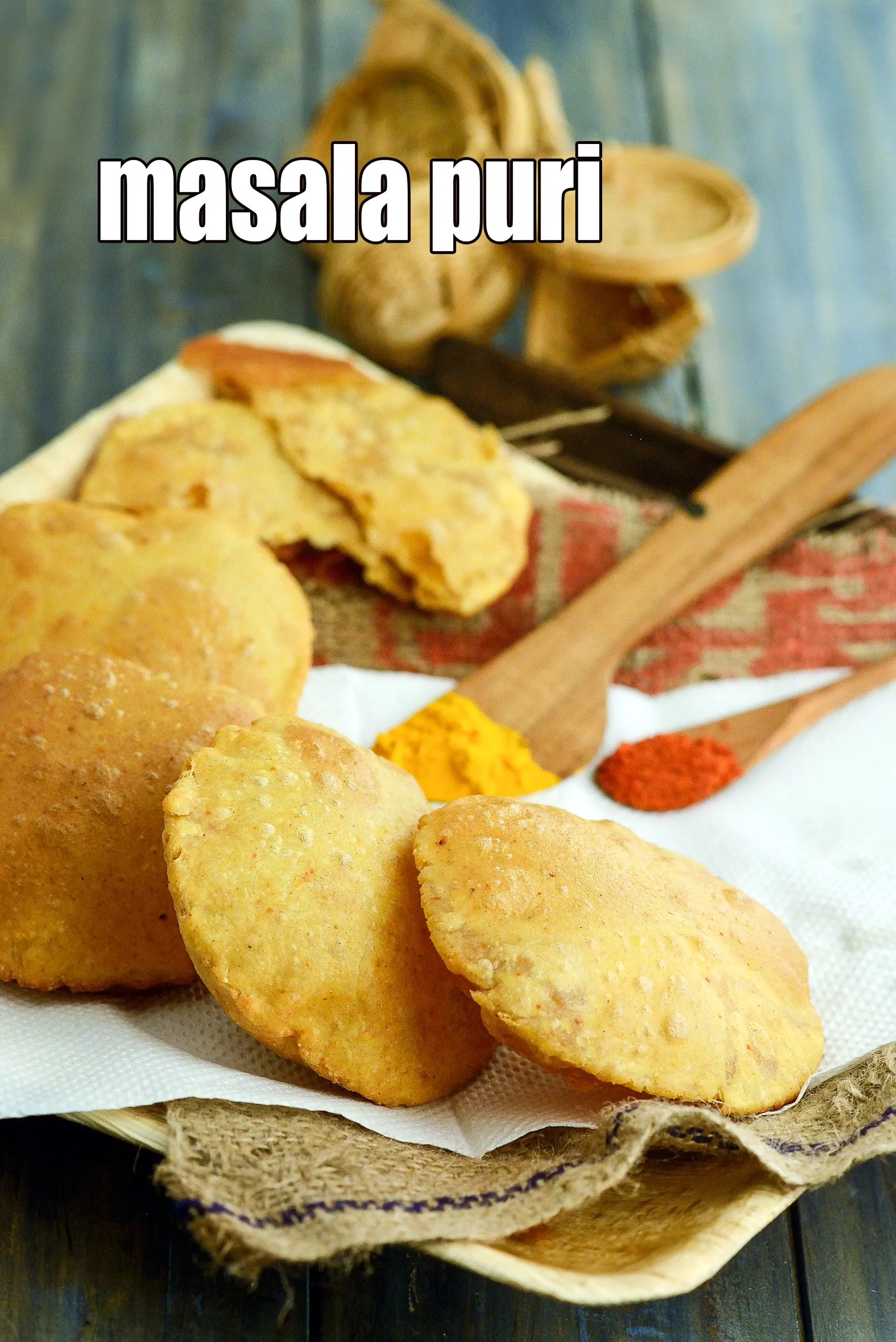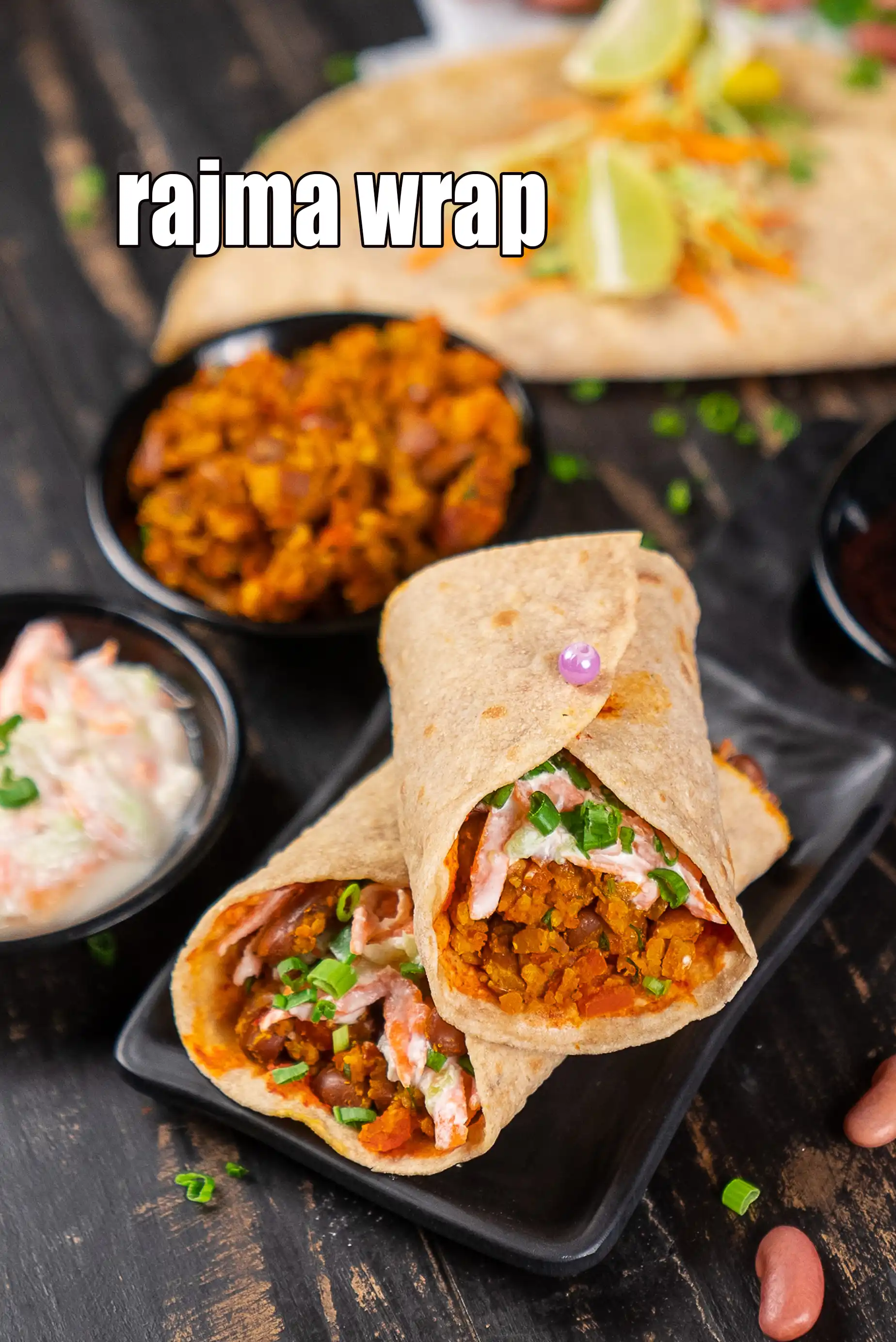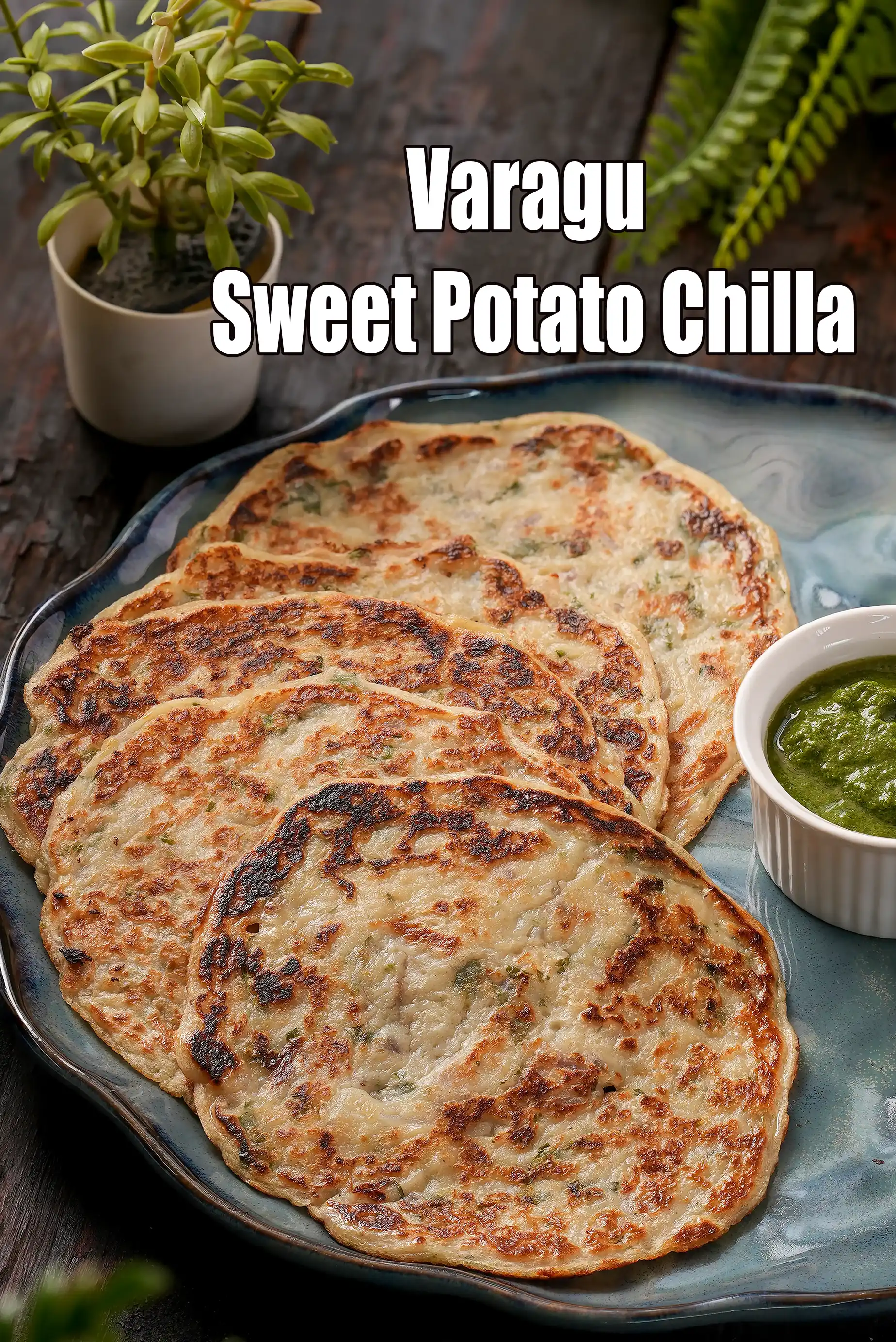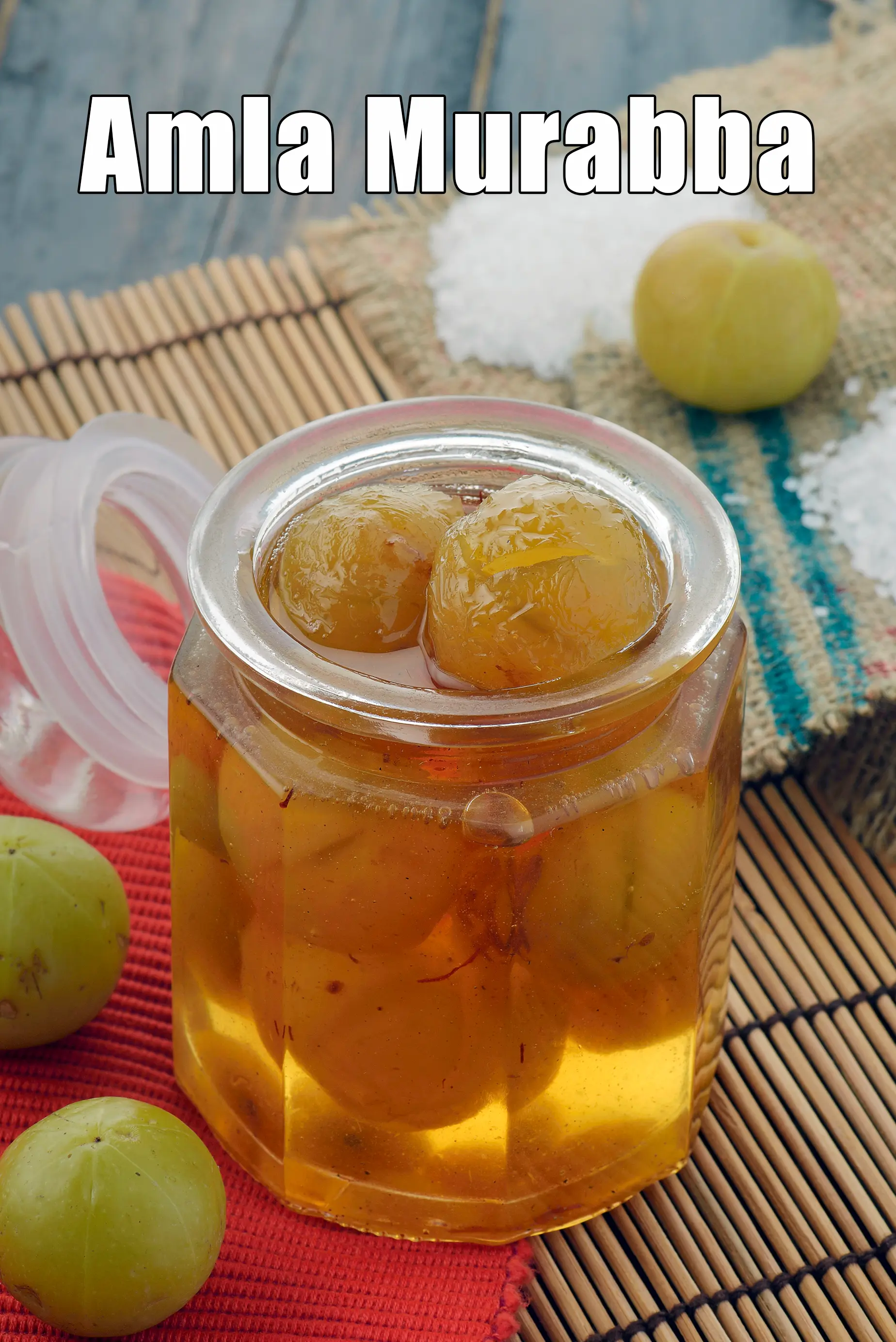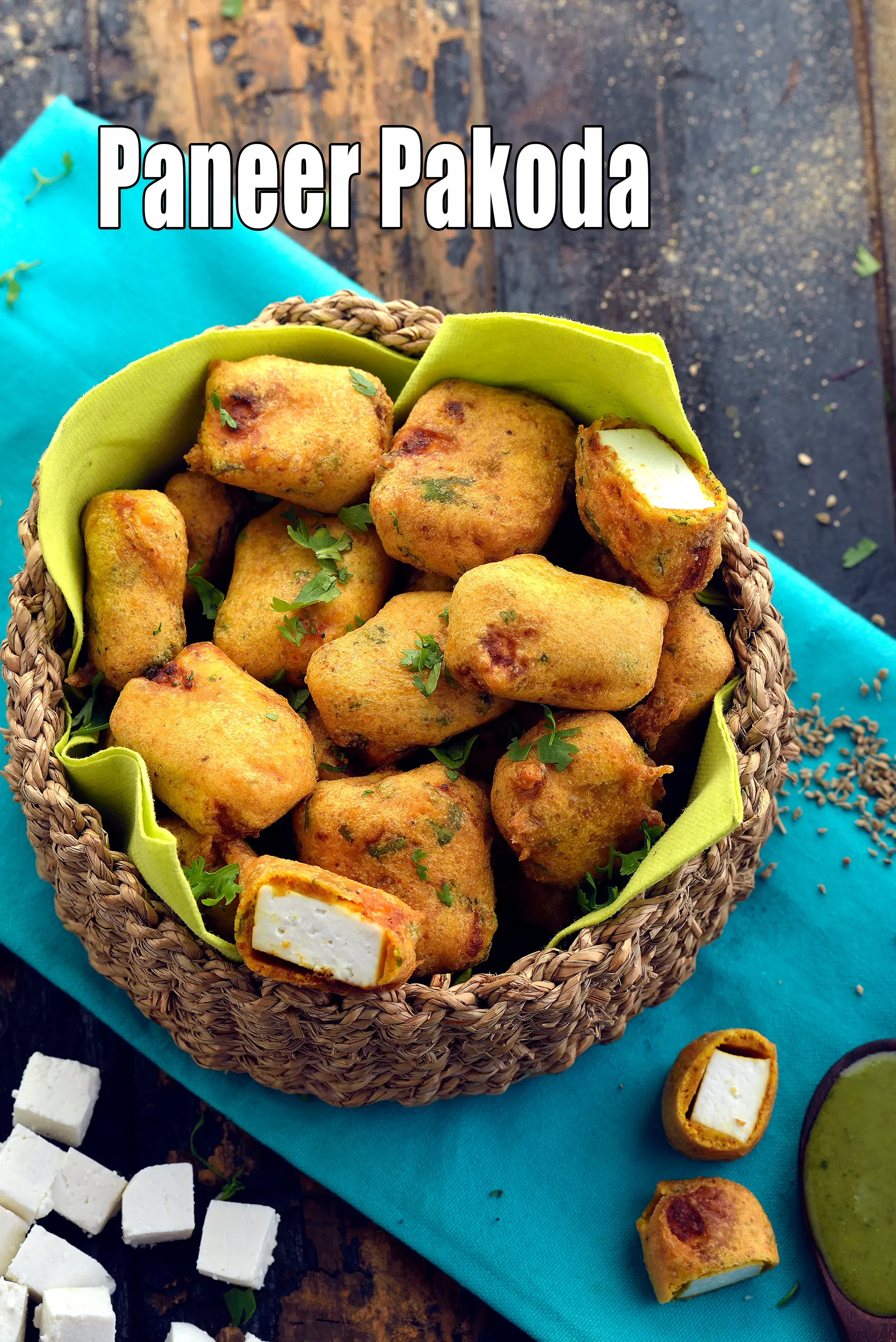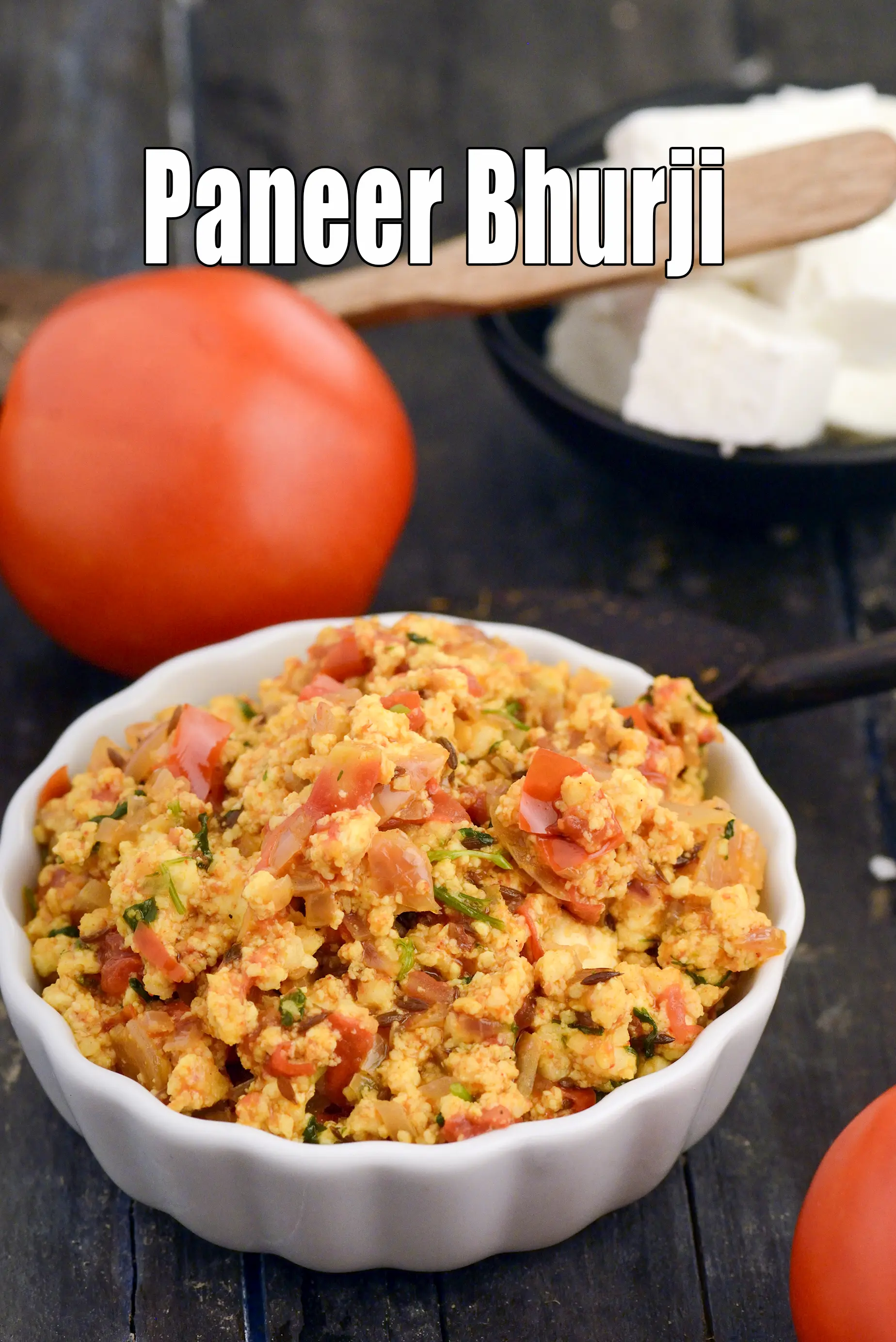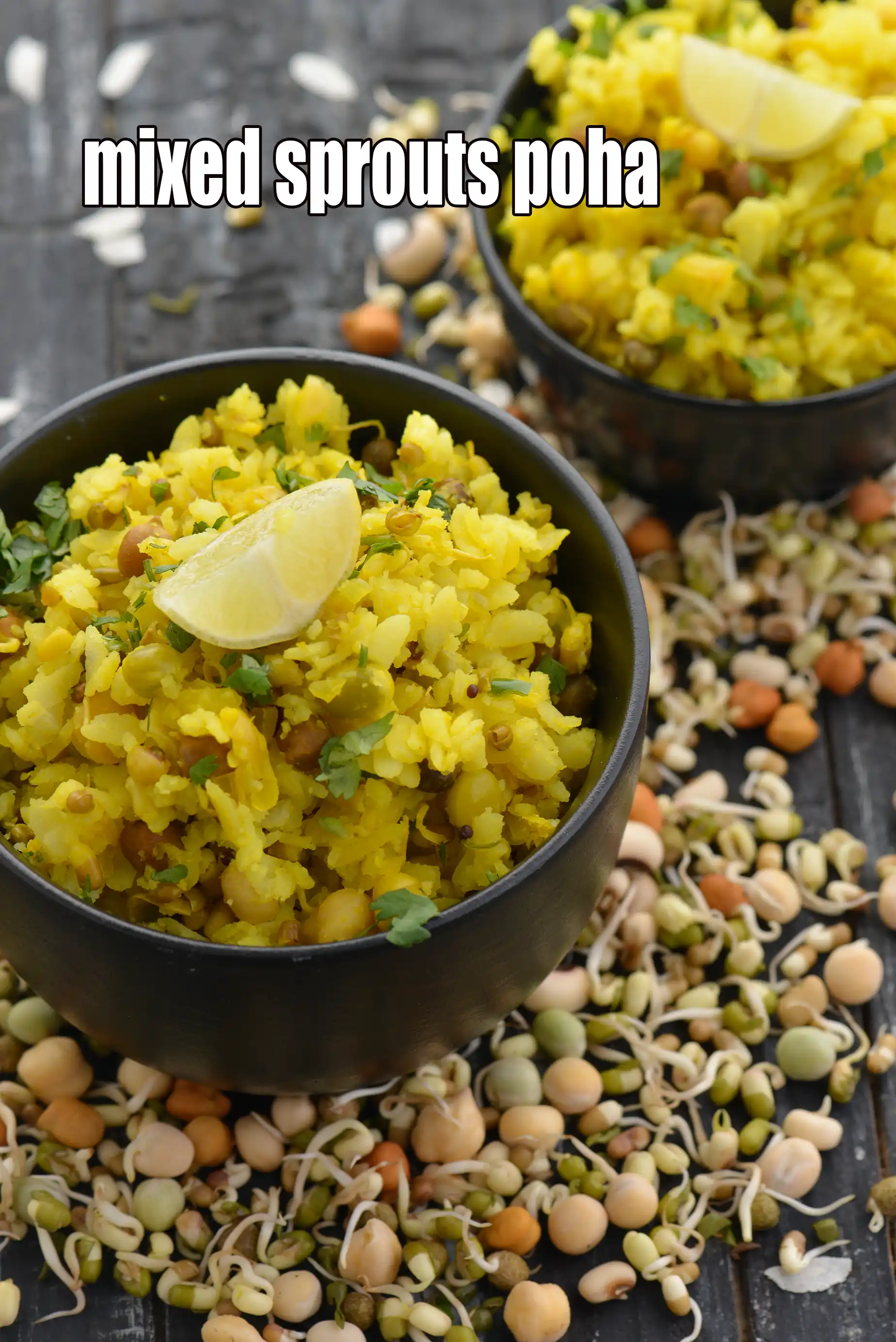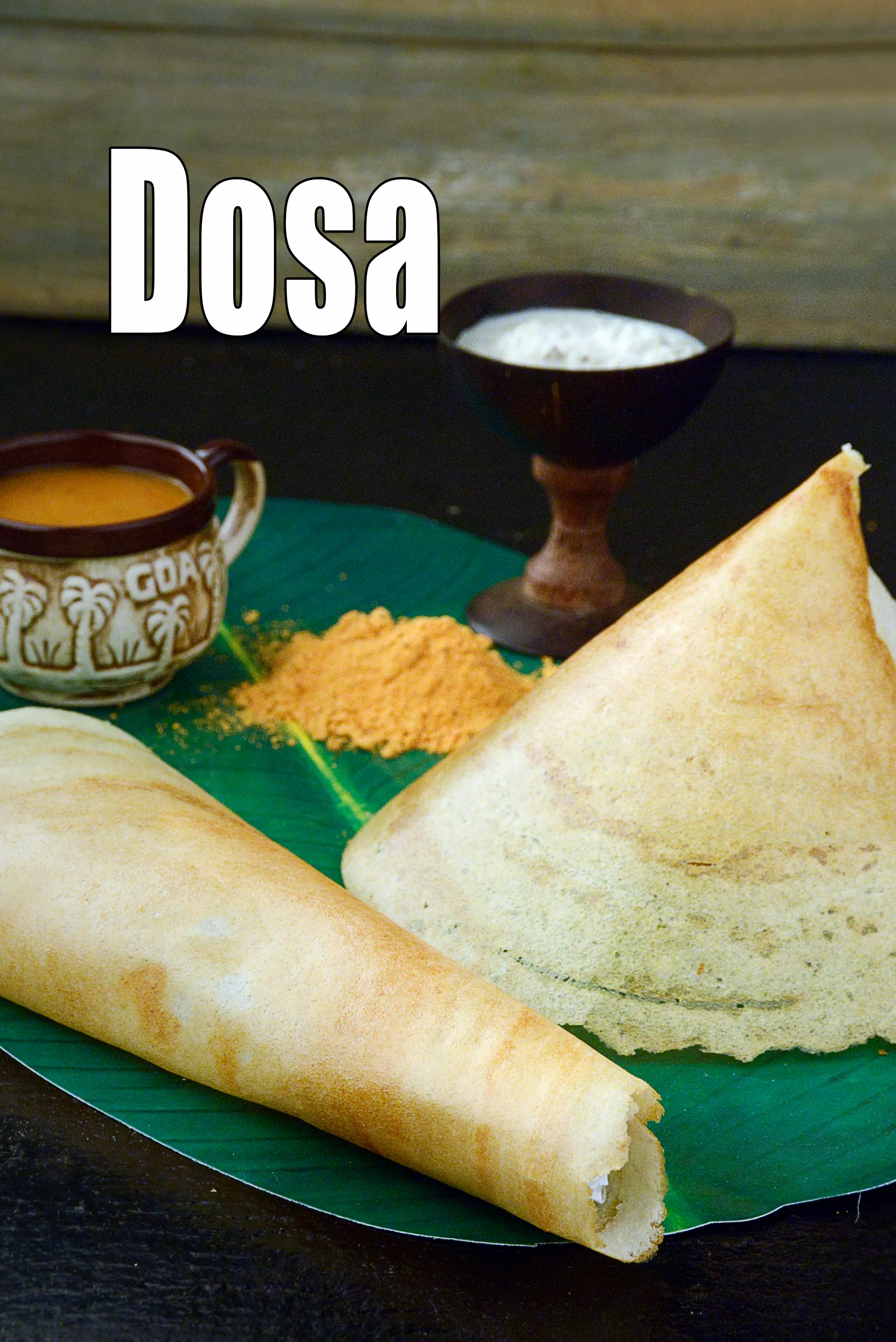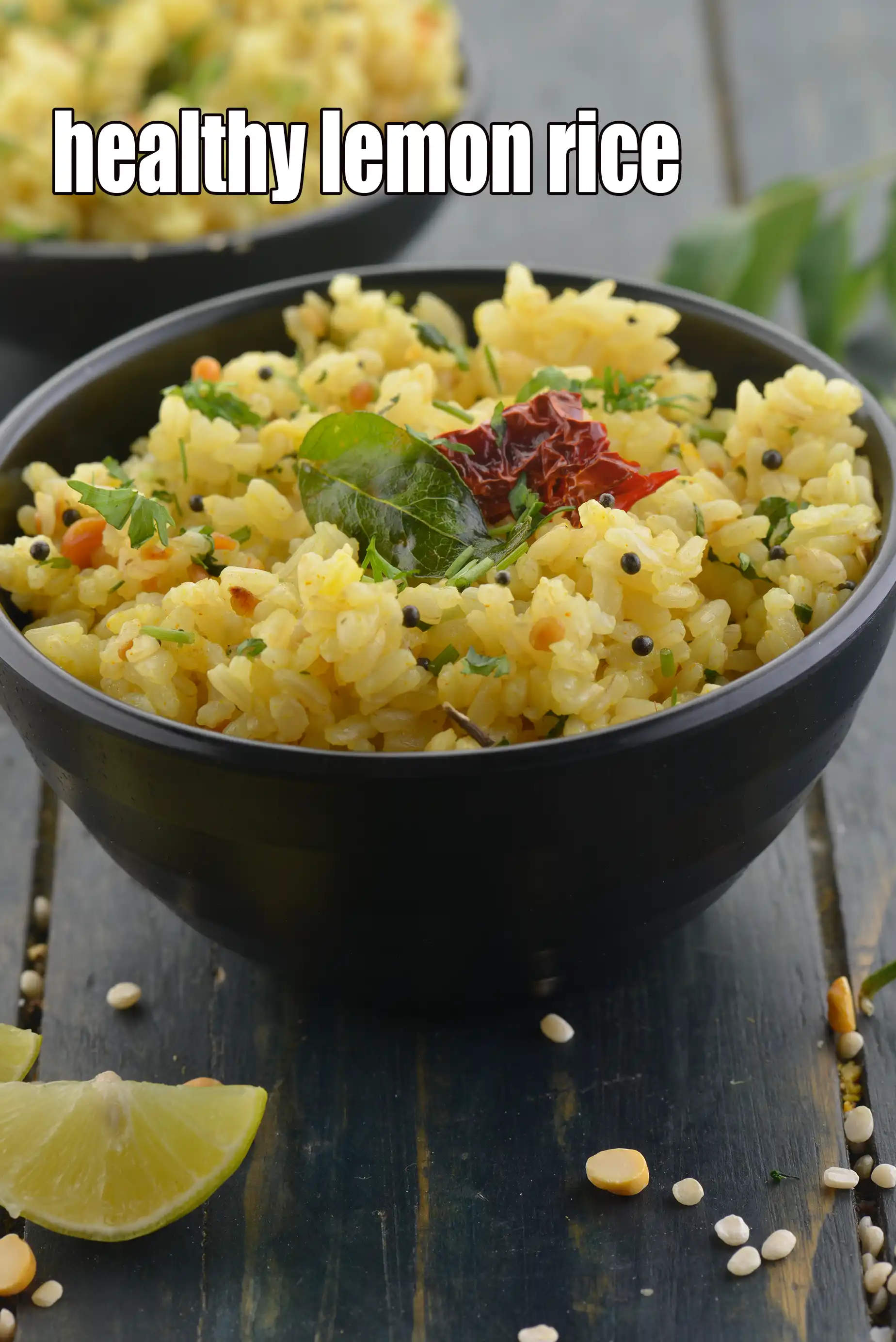This category has been viewed 294856 times
Cuisine > Indian Veg Recipes > Jain > Jain Sabzi / sabji without onion and garlic
27 Jain Sabzi / Sabji Without Onion And Garlic Recipes
Last Updated : 02 January, 2025

Table of Content
Jain Sabzi Recipes | sabji without onion and garlic | Jain Gravy Recipes |
Jain Sabzi Recipes, Jain Gravy Recipes, Subzis and gravies are an everyday affair for Indians. There is an ample variety in that department but it is harder for Jains as they do not eat some vegetables. People who follow Jainism do not consume any root vegetables and many green leafy vegetables too. Many Jains do not follow this rule exactly as they eat all vegetables except onions, potatoes and garlic but we have still mentioned a few examples of ingredients that Jains avoid. This list is not exhaustive but is indicative.
quick paneer sabzi recipe | paneer ki sukhi sabzi| 10 minute paneer sabji | simple Indian jain paneer sabzi
quick paneer sabzi recipe | paneer ki sukhi sabzi| 10 minute paneer sabji | simple Indian jain paneer sabzi
List of foods that are not consumed by Jains
- onions
- Garlic
- Green ginger and Turmeric
- Yams
- Carrots
- Bambo Karela
- Radish
- Funghi (mushrooms)
- Tubular vegetables like potatoes, sweet potatoes
- Green Leafy Vegetables like coriander, spinach, methi, cabbage, cauliflower greens and Dill leaves are avoided during the monsoon season.
- Cauliflower
- Many seeded vegetables like Brinjal
- Pods of many trees including banyan tree, pipal tree etc
- Yeast
- Alcohol
Jainism is based on the concept of "Ahimsa" which means non-violence. All the food consumed by a Jain is meant to cause least disruption and hurt to other organisms and "jivas" in the world, both visible and microscopic. For example – the reason for avoiding any vegetable that grows underground is that to procure such a vegetable, an entire plant has to be uprooted which causes unnecessary death of such a plant which is against the principles of Jainism and ahimsa.
Many seeded vegetables like eggplant (baingan) are avoided as they are considered to be the carriers of new life, owing to the fact that they have many seeds. Even though not all Jains shun eggplant, this is the general thought process behind eliminating such ingredients. Similarly, green leafy vegetables are also avoided during "chaturmaas" ie a holy observance period coinciding with the monsoon season, as the chances of mistakenly eating micro-organisms increases.
Jainism believes in the concept of live and let live. It is all for protection of all types of organisms and promotion of sattvik lifestyle. Another reason is that all the foods we consume reflect on our behavior. Certain other things that are avoided by Jains observing a strict diet is the mixing of raw milk and pulses or eating leftover food the next day. All these rules have the same reasoning of non-violence and balanced lifestyle behind it. Even though these rules exist, not many adhere to it strictly as they only avoid onion, potato and garlic. Strict observance is not forced, but is encouraged.
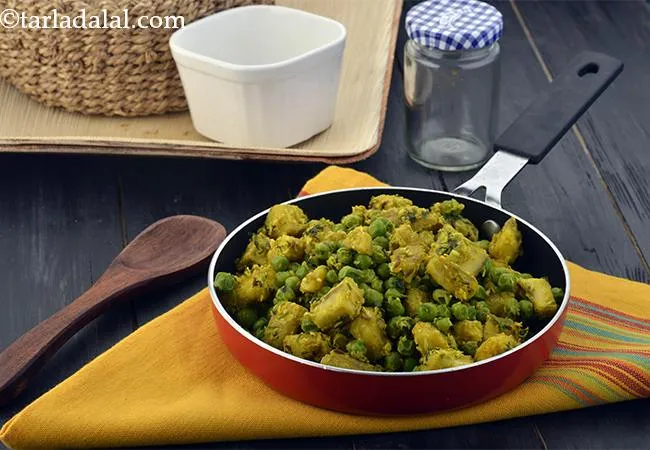 Green Peas and Raw Banana Subzi, Matar Aur Kacha Kale ki Subzi
Green Peas and Raw Banana Subzi, Matar Aur Kacha Kale ki Subzi
Even though it might seem like jains do not have many options, but in fact they have many options too! Just the simple mix of vegetables with humble spices and tadkas, make for delicious subzis. Not a day passes in the Indian kitchen without preparing at least one subzi or gravy to accompany rice or rotis, so here I am going to mention a few of our favorite jain subzis and gravies.
Quick Jain Subzis
- Quick Paneer Subzi - Delicious Jain-style vegetable that is uses basic ingredients like paneer, tomato, capsicums and spices like coriander and cumin. Because the subzi is so simple, it brings out the flavors of all the ingredients.
- Chawli Bean subzi – This unique Chawli Bean Subzi is sure to please your palate with its exciting sweet, sour and spicy flavor. Since it does not utilize any root vegetables, it can be had by jains.
- Kele ki subzi – Even though jains use a lot of raw bananas in their recipes, they also make subzis with ripe bananas and a simple tadka.
Unique Jain Subzis
Dishes can be prepared using a lot of tomatoes, apt spice powders and raw bananas instead of potatoes. A few recipes can even be made with unique ingredients like gathias, rotis and hara chana. Many Gujaratis even like interesting combinations! Kela Methi Nu Shaak recipe, with a rare combination of mildly-bitter methi and pleasantly-sweet bananas, brings out the best in both the ingredients.
- Ganthia Nu Shaak – This unique subzi is easily made when you are out of the basic vegetables at home. The slightly tangy flavor from the curd compliments the saltiness of the gathias.
- Rotli nu shaak – It is common to have roti with subzi, but have you ever thought of making subzi out of rotis? This is not only a very different way to eat it, but is also really simple to make.
- Peru ki subzi – Just how you can add vegetables, you can also add fruits to subzis. Guava cubes are flavored with chilli powder, turmeric, mustard seeds and other spices to bring it together.
Rasawali Jain Subzis (Jain Subzis with Gravy)
Gujarati subzis do not usually have a thick gravy but some do have a thin gravy. Some of these delicious recipes are

Sev Tameta, Rasawala Sev Tameta
- Sev Tameta – This is an easy to make, sweet and tangy subzi that is very famous in the kathiawaad region. It hardly requires 5 to 6 ingredients and turns out absolutely delicious.
- Gavarfali ki subzi - this preparation of cluster beans and curd is an absolute winner. Once you try it, this fibre and folic acid rich subzi will become a frequently repeated menu item.
Enjoy our Jain Sabzi Recipes, Jain Gravy Recipes and other Jain Recipe articles below.
Jain (460 recipes)
Jain Dal, Jain Kadhi (28 recipes)
Jain International (108 recipes)
Jain Naashta (120 recipes)
Jain Paryushan (36 recipes)
Jain Pickles / Chutneys / Raita / Salad (31 recipes)
Jain Rice (22 recipes)
Jain Rotis (35 recipes)
Jain Soups (44 recipes)

Punjabi matar paneer tikka masala | green peas paneer tikka masala recipe | mutter paneer with tikka masala … More..
Recipe# 4029
26 March, 2021
calories per serving
Jain Pav bhaji recipe | Jain Mumbai roadside Pav bhaji | no potato, garlic and onion Pav bhaji … More..
Recipe# 5306
28 June, 2020
calories per serving
chawli bean sabzi recipe | healthy lobhia sabzi | Indian cow pea curry | zero oil chawli bean … More..
Recipe# 4210
05 January, 2022
calories per serving
quick paneer sabzi recipe | paneer ki sukhi sabzi | 10 minute paneer sabji | simple Indian jain … More..
Recipe# 264
09 October, 2022
calories per serving
methi papad recipe | methi papad nu shaak | Rajasthani methi papad | methi papad ki sabzi | … More..
Recipe# 1800
21 February, 2020
calories per serving
cabbage capsicum sabzi recipe | healthy simla mirch gobi sabzi | Indian dry cabbage capsicum sabzi | gobi … More..
Recipe# 5611
19 January, 2021
calories per serving
Grated pumpkin retains its crunchiness in these crisp koftas simmered in tangy tomato gravy. More..
Recipe# 4025
05 February, 2006
calories per serving
kele ki sabzi recipe | sukha kele ki sabzi | banana sabzi | with 10 amazing images. The Banana … More..
Recipe# 6381
01 May, 2020
calories per serving
cabbage poriyal recipe | South Indian style patta gobi poriyal | cabbage thoran | with 18 amazing images.cabbage … More..
Recipe# 17
18 January, 2024
calories per serving
fansi dhokli recipe | Gujarati French beans sabzi | healthy fansi dhokli | with 30 amazing images.fansi dhokli … More..
Recipe# 1793
17 January, 2024
calories per serving
calories per serving
Punjabi matar paneer tikka masala | green peas paneer tikka masala recipe | mutter paneer with tikka masala … More..
calories per serving
Jain Pav bhaji recipe | Jain Mumbai roadside Pav bhaji | no potato, garlic and onion Pav bhaji … More..
calories per serving
chawli bean sabzi recipe | healthy lobhia sabzi | Indian cow pea curry | zero oil chawli bean … More..
calories per serving
quick paneer sabzi recipe | paneer ki sukhi sabzi | 10 minute paneer sabji | simple Indian jain … More..
calories per serving
methi papad recipe | methi papad nu shaak | Rajasthani methi papad | methi papad ki sabzi | … More..
calories per serving
cabbage capsicum sabzi recipe | healthy simla mirch gobi sabzi | Indian dry cabbage capsicum sabzi | gobi … More..
calories per serving
Grated pumpkin retains its crunchiness in these crisp koftas simmered in tangy tomato gravy. More..
calories per serving
kele ki sabzi recipe | sukha kele ki sabzi | banana sabzi | with 10 amazing images. The Banana … More..
calories per serving
cabbage poriyal recipe | South Indian style patta gobi poriyal | cabbage thoran | with 18 amazing images.cabbage … More..
calories per serving
fansi dhokli recipe | Gujarati French beans sabzi | healthy fansi dhokli | with 30 amazing images.fansi dhokli … More..


Related Recipes
Follow US
Recipe Categories
- Vitamin B12 Cobalamin Rich Recipes 33 recipes
- Low Calorie, Weight Loss Indian Recipes 421 recipes
- Low Cholesterol Indian Recipes 308 recipes
- Healthy Indian Breakfast 373 recipes
- Indian Diabetic recipes 559 recipes
- Indian Pregnancy recipes 461 recipes
- Zero Oil Indian Recipes 133 recipes
- Iron Rich Indian recipes 268 recipes
- Healthy Indian Acidity recipes 134 recipes
- Healthy Sabzis 108 recipes
- Indian Healthy Veg Snack 276 recipes
- Healthy Heart Recipes 415 recipes
- Healthy Veg Indian Soups 74 recipes
- Calcium Rich Indian Recipes 373 recipes
- High Blood Pressure Indian Recipes 103 recipes
- Healthy Indian Salads Recipes 137 recipes
- Low Carb Indian Diet, recipes 163 recipes
- Hypothyroidism Diet 63 recipes
- Arthritis Diet 68 recipes
- High Protein Indian recipes 94 recipes
- Vitamin K Diet 42 recipes
- Fatty Liver Diet 39 recipes
- PCOS 136 recipes
- Gluten Free Veg Indian 196 recipes
- High Fiber 328 recipes
- Indian Cancer Patients 275 recipes
- Jaundice Diet 45 recipes
- Sprouts 61 recipes
- Typhoid 43 recipes
- Irritable Bowel Syndrome (IBS) 23 recipes
- Kidney Stone Diet 10 recipes
- Home Remedies 213 recipes
- Senior Citizen 195 recipes
- Healthy Indian Drinks and Juices 213 recipes
- Diet for Dialysis 10 recipes
- Gout Indian Recipes 17 recipes
- Potassium Rich 80 recipes
- Vegan 195 recipes
- Indian recipes to treat Vomiting 8 recipes
- Forever Young Diet, Anti Aging Indian Diet 255 recipes
- Antioxidant Rich Indian 445 recipes
- Vitamin B1 Rich Indian Foods, Recipes 101 recipes
- High in Omega 3 Fatty Acids 32 recipes
- Zinc Rich Foods 55 recipes
- Vitamin A Rich, Beta Carotene, Retinol 89 recipes
- Malaria Diet 19 recipes
- Magnesium Rich 94 recipes
- Healthy Indian Dinner 85 recipes
- Vitamin C Rich Indian recipes 118 recipes
- Low Veg Glycemic Index 86 recipes
- Lower Blood Pressure Salads 8 recipes
- Healthy Indian Lunch Recipes 29 recipes
- Lactation 25 recipes
- Vitamin E Rich 51 recipes
- Hyperthyroidism Diet 47 recipes
- Vitamin B3, Niacin Rich 41 recipes
- Post Surgery Diet 42 recipes
- Selenium 27 recipes
- Lower Blood Pressure Desserts Sweets 14 recipes
- Phosphorus Rich Indian Recipes, Foods 74 recipes
- Copper 15 recipes
- Foods Rich in Vitamin B2 Riboflavin 22 recipes
- Vitamin B6 Diet 36 recipes
- B Vitamins 231 recipes
- Vitamin B9 Rich Folate 50 recipes
- Marathoners, Endurance Athletes, Triathlete 225 recipes
- Manganese Diet 32 recipes
- Thalassemia 18 recipes
- Detox Water, Fruit Infused Water 42 recipes
- Lactose Free Dairy Free 22 recipes
- Omega 6 Fatty Acids 32 recipes
- Phytonutrients 51 recipes
- Chronic Kidney Disease Indian recipes 12 recipes
- Selenium1 0 recipes
- Quick Snacks / Quick Starters 385 recipes
- Quick Breakfast Indian 131 recipes
- Quick Sabzis 117 recipes
- Quick Rotis / Parathas 46 recipes
- Quick Indian Sweets 139 recipes
- Quick Stir-Fries 51 recipes
- Quick Vegetarian Indian Soups 72 recipes
- Quick Chutneys 67 recipes
- Quick Vegetarian Rice, khichdi Recipes 56 recipes
- Indian snacks under 10 minutes 44 recipes
- Quick Indian Dips, Gravies & Sauces 105 recipes
- Quick Veg Indian Pizza 17 recipes
- Quick Veg Pasta 25 recipes
- Quick Pickles / Aachar 25 recipes
- Quick Dals / quick Kadhis 29 recipes
- Snacks under 5 minutes 33 recipes
- Quick Healthy Recipes 43 recipes
- Quick Pressure Cooker 46 recipes
- Quick Desserts 47 recipes
- Quick 3 Ingredients 63 recipes
- Quick Indian Desserts 20 recipes
- Quick 4 Ingredients 41 recipes
- Quick 5 Ingredients 42 recipes
- Kids Tiffin Box 319 recipes
- Recipes for Toddlers (1-3 Years) 32 recipes
- Sweet Recipes for Kids 456 recipes
- Recipes for Baby (10 to 12 Months) 17 recipes
- Quick Indian recipes for Kids 72 recipes
- Indian Breakfast Recipes for Kids 192 recipes
- Recipes for Weaning (8 to 9 months) 22 recipes
- Healthy Foods for Kids 196 recipes
- Snack Recipes for Kids 619 recipes
- Recipes Kids can make 36 recipes
- Kids After School 794 recipes
- Kids Jar Snacks 66 recipes
- Finger Foods for Babies, Toddlers and Kids 76 recipes
- Kids Weight Gain 43 recipes
- Kids Wraps and Rolls 23 recipes
- Kids Veg Pasta 27 recipes
- Kids Brain Boosting 68 recipes
- Protein rich food for kids 71 recipes
- Recipes for Weaning 15 recipes
- Kids Pizzas 30 recipes
- Babies, Toddler and Kids Iron Rich Foods 31 recipes
- High Fiber Foods for Kids 39 recipes
- Kids Noodles 37 recipes
- Kids High Energy Indian Foods 103 recipes
- Kids Calcium Rich Indian recipes 92 recipes
- Babies recipes, 6 to 18 months 34 recipes
- Kids Recipes for Increasing Immunity 10 recipes
- Kids Weight Loss 58 recipes
- Teething Recipes for Babies 10 recipes
- Cereals and Pulses for 8 to 9 months Baby 8 recipes
- Weaning foods at 7 months 12 recipes
- Indian Teen 315 recipes
- Starters / Snacks 2138 recipes
- Indian Breakfast Recipes 819 recipes
- Main Course Recipes 925 recipes
- Indian Salads 385 recipes
- Indian Desserts , Sweets 985 recipes
- Indian Soups 249 recipes
- Indian Beverages, Indian Drinks 483 recipes
- Indian Dinner 903 recipes
- Indian Dinner1 0 recipes
- Indian Lunch 829 recipes
- Side Dishes 449 recipes
- Indian Travel Food 433 recipes
- Indian Barbeque1 recipes 22 recipes
- Frozen Foods, Indian Freezer Recipes 67 recipes
- Whole Wheat Recipes 56 recipes
- Indian Comfort Foods 212 recipes
- Dinner Menus 56 recipes
- Easy Indian Veg 70 recipes
- Innovative Indian Recipes 27 recipes
- No Cook Indian 37 recipes
- Advanced Recipes 10 recipes
- Cakes with Eggs 13 recipes
- Microwave 229 recipes
- Oven 619 recipes
- Indian Steamer Recipes 102 recipes
- Kadai Veg 407 recipes
- Indian Barbeque Recipes 43 recipes
- Sizzler tray 15 recipes
- Mixer 566 recipes
- Pressure Cooker 315 recipes
- Tava 647 recipes
- Non-stick Pan 1393 recipes
- Indian Freezer recipes, meals 57 recipes
- Appe Mould 18 recipes
- Pan 223 recipes
- Non Stick Kadai Veg 203 recipes
- kadai Indian 150 recipes
- Refrigerator 176 recipes
- Waffle Indian recipes 6 recipes
- Handi 12 recipes
- Juicer and Hopper 65 recipes
- Grill 31 recipes
- Toaster 21 recipes
- Gas Toaster 8 recipes
- Steam 72 recipes
- No Cooking Veg Indian 335 recipes
- Vegetarian baked Indian recipes 380 recipes
- Boiled Indian recipes 129 recipes
- Deep Fry 260 recipes
- Indian Tawa 265 recipes
- Shallow Fry Indian 25 recipes
- Microwave1 172 recipes
- Saute 273 recipes
- Indian Pressure Cooker 171 recipes
- Stir-fry 101 recipes
- Roasting 0 recipes
